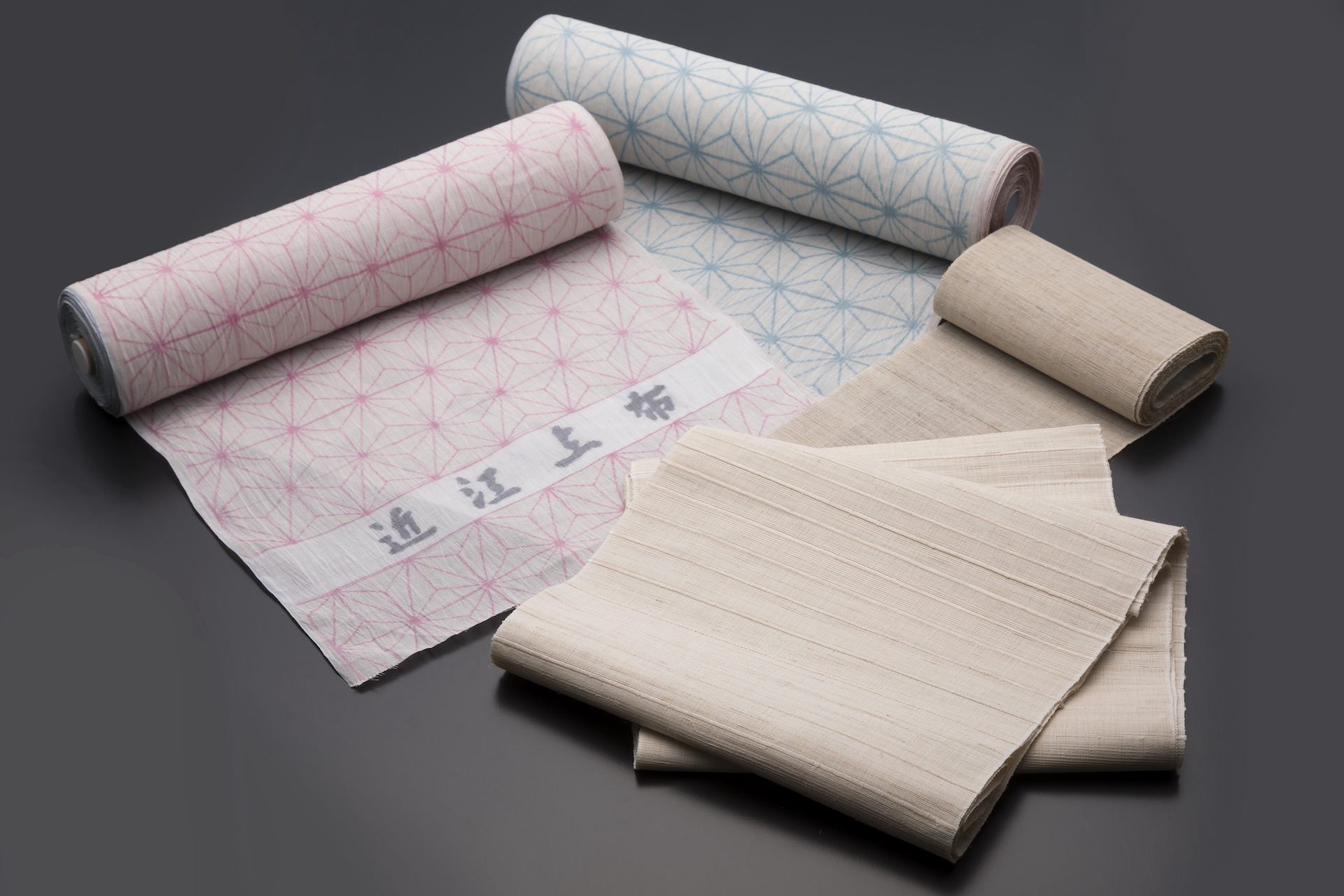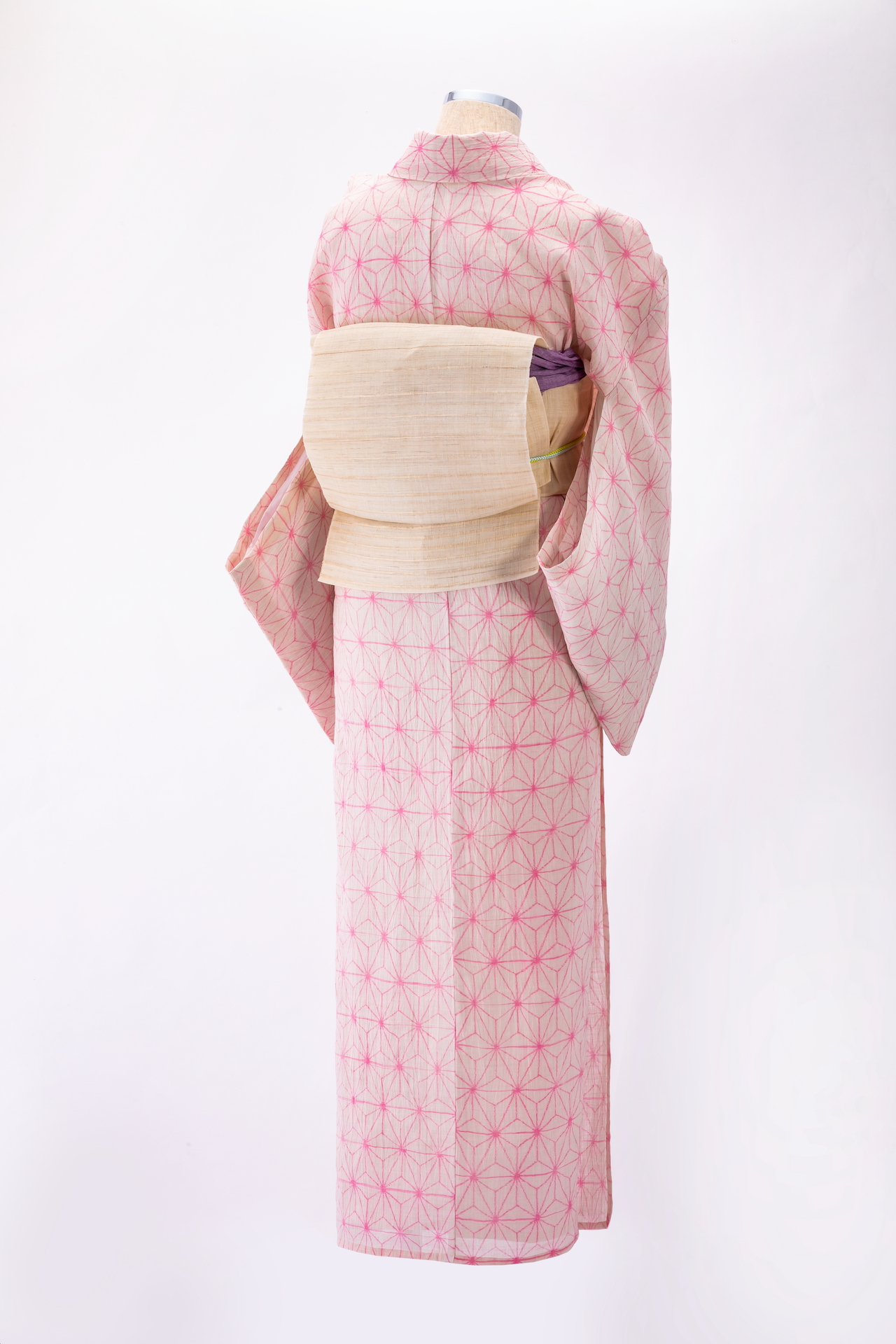近江上布
Pronunciation: Omi-jofu
Production area: Koto region, Shiga Prefecture
Omi-jofu is a hemp textile produced in the Koto region. It is renowned for two distinctive features. The first is its refined kasuri (ikat) patterns, created through methods such as stencil-resist dyeing (katagami-nassen) on the weft yarns, or a combination of stencil dyeing on the weft and comb-print resist (kushi-oshi-nassen) on the warp. When woven, the intersecting ikat patterns create intricate designs. After weaving, a unique finishing process called shibotsuke adds the region’s characteristic crêpe-like texture. The second feature is kibira, an unbleached hemp cloth woven on a traditional ground loom (jibata). Using hand-spun hemp threads for the weft, kibira has been produced since the Muromachi period and is now a rare textile due to the time-intensive process. The history of Omi-jofu dates back to the Kamakura period, when Kyoto artisans introduced hemp weaving techniques. By the Muromachi era, it was known as Takamiya-fu and even used as tribute cloth. During the Edo period, it thrived further under the protection of the Hikone Domain, and became widely traded thanks to Omi merchants. Valued for its excellent water absorption, quick drying, and cool, refreshing comfort, Omi-jofu was designated as a Traditional Craft of Japan in 1977.
See Also: Traditional Craftsmanship Vol.9 "Omi Jofu" | Shiga


Photo courtesy ofShiga Prefecture Linen Textile Industrial Association



















